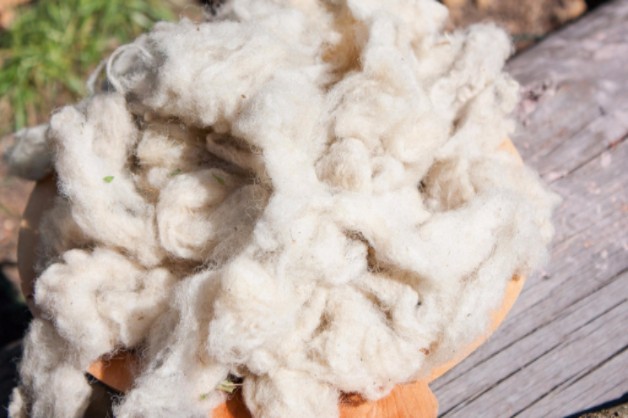When the word “wool” is mentioned, some people immediately think itchy. Fortunately, all wool is not itchy. In fact, wool that is high in quality and that has been processed properly can feel like a fluffy cloud.
Where does wool come from?
Sheep and other animals such as goats, rabbits and some camelids like alpacas produce wool. Each animal produces a different quality of fiber. The micron count decides the quality of the wool. The micron count refers to the diameter of the fiber from the animal and the smaller the micron count, the finer and softer the wool.
Fine wool typically has a micron count between 17 and 20, whereas coarse wool that’s used for rugs, carpet or outerwear has a micron count between 36 and 40. Wool beds, wool blankets and wool clothing can be made from a lower micron count wool.
How is wool processed?
Though the quality of the wool is paramount in making sure that your wool product isn’t itchy, the proper processing of that wool is also important.
It all starts with a haircut.
The sheep, or other fiber animal, is sheared of its wool. If this is done improperly, the long lengths of wool, also referred to as a staple length, can be cut short, which means more breaks in the yarn or thread that it’s spun into. This can cause a bit of itchiness. However, when the wool is properly sheared from the animal, this is less likely to occur.
After the animal is wool free, the wool needs to be cleaned. Wool has a natural grease called lanolin that protects it while it is on the animal. After being washed, wool should still have some of the lanolin remaining, but the largest share of lanolin – vegetable matter and other debris – has to be removed from the wool.
Some wool processors use chemicals to clean the wool before it is made into yarn or thread. However, those chemicals break down the fine fiber that keeps the wool feeling so smooth and soft. Small wool processors typically use a mild soap and warm water to naturally clean the wool. This removes the dirt and vegetable matter – as well as a large part of the lanolin – but leaves the amount that should remain for making great yarn or thread for wool beds, wool clothing, wool blankets and other wool items.
Does wool quality effect itchiness?
Of course, there are other factors that weigh into the lack of itchiness in a wool garment such as the health and age of the animal. Smaller fiber producers tend to provide a more organic approach to the health and feeding of fiber animals, which helps the animals produce very high-quality wool.
Unfortunately, this may not be the case with all wool farms which could mean a coarser grade of wool.
Do I have a wool allergy?
While high quality wool can be soft, luxurious and warm, some people may have wool allergies. Wool allergies refer to a reaction from the lanolin in the wool fibers. Typically, most or all the lanolin is removed from the wool fiber during the cleaning process.
However, there are some people who simply cannot tolerate the lanolin in the wool and may have an allergic reaction such as a rash, runny nose, sneezing, breathing problems or conjunctivitis. Fortunately, this is rare.

